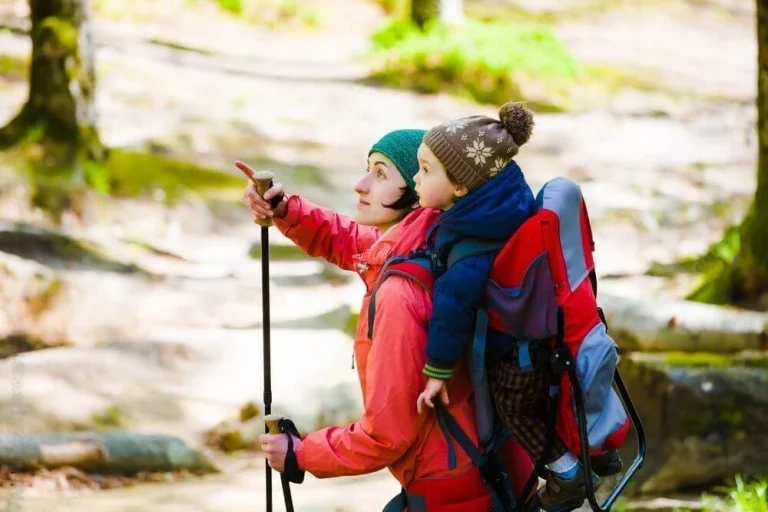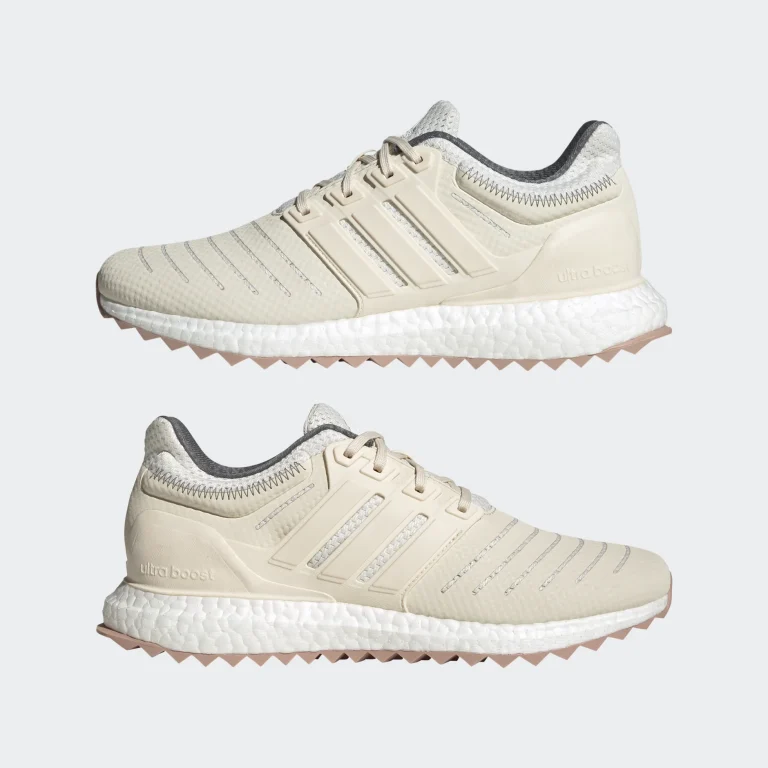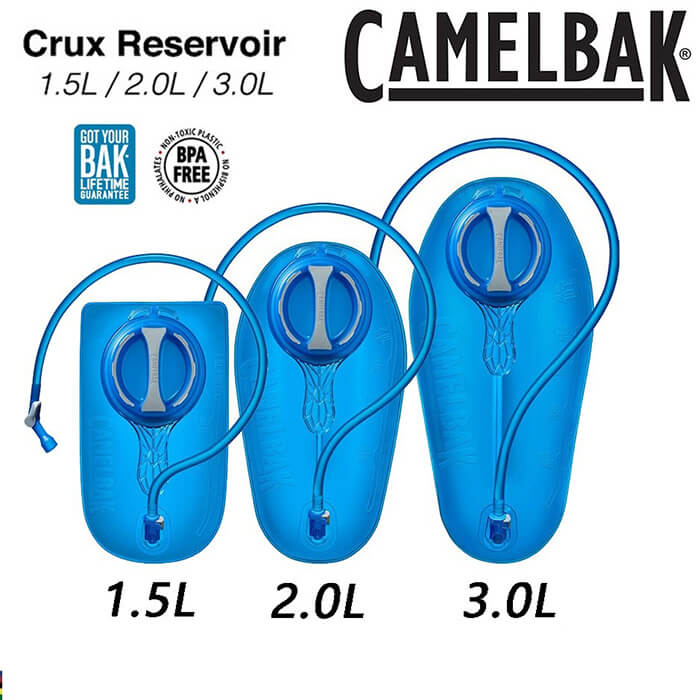Hiking vs. Trekking: What’s the difference?
Hiking vs. Trekking: What’s the difference?
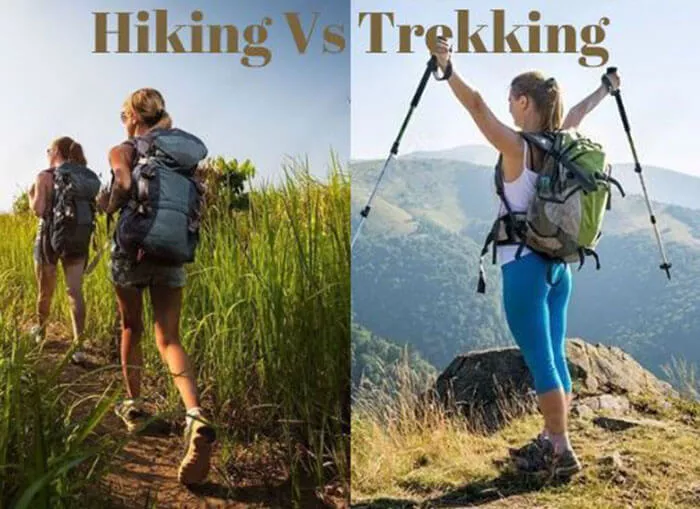
Hiking and trekking are both great ways to get outdoors and enjoy nature. They can be done for exercise, pleasure, or both. Hiking is usually done on trails, while trekking can be done on any type of terrain.
Both activities can be done alone or with a group. But are they the same?
Well, as it turns out they are a lot of differences between the two outdoor activities. In this guide, we will demystify the terms, and at the end of the reading, you should have a clear idea of what is what, so read on.
THE DIFFERENCE BETWEEN HIKING AND TREKKING
Hiking is a form of walking, typically done on trails or footpaths in the countryside. Hiking is often done for recreation or exercise, but it can also be done as part of a journey. Trekking is a term often used interchangeably with hiking, but it usually refers to longer, multi-day journeys.
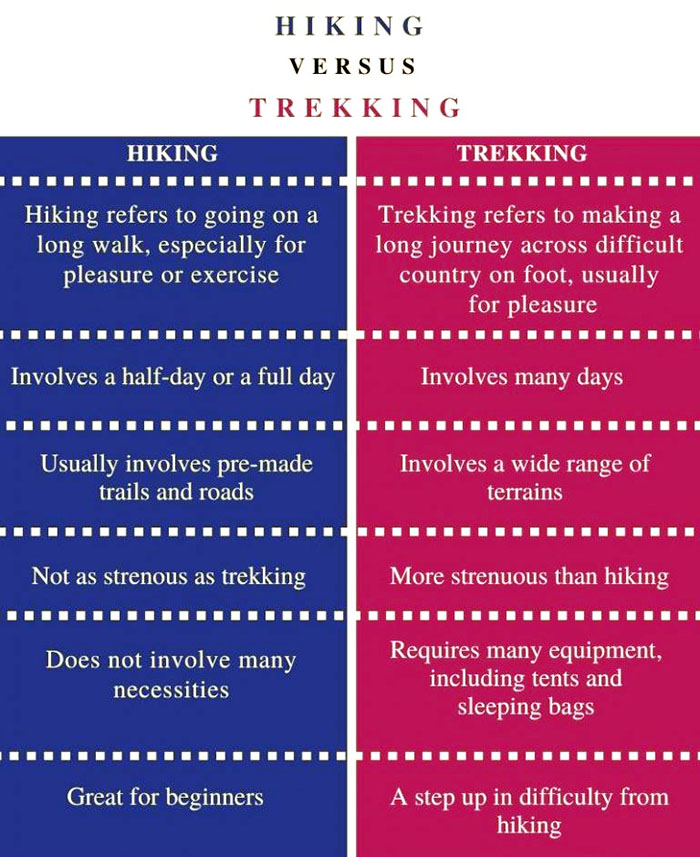
WHAT ARE THE HEALTH BENEFITS OF HIKING AND TREKKING?
Hiking and trekking are great forms of exercise that come with a plethora of health benefits. Regular physical activity over months and years can produce long-term health benefits.
For starters, they help improve your cardiovascular health by getting your heart pumping and blood flowing. They also strengthen your leg muscles, improve your balance and coordination, and help increase your stamina. Additionally, long walks can help clear your mind, reduce stress levels, and boost your mood.
So next time you’re feeling down or need to get some exercise, lace up your hiking boots and hit the trails!
The CDC recommends in their newest Physical activity guidelines, called “Move your Way” that you walk at least 150 to 300 minutes of moderate-intensity aerobic activity, like brisk walking or fast dancing, each week five days a week to reduce your risk of stroke by half! outdoor activities are great ways to improve your heart and blood pressure, which in turn minimizes your chance of stroke. So get out there and explore!
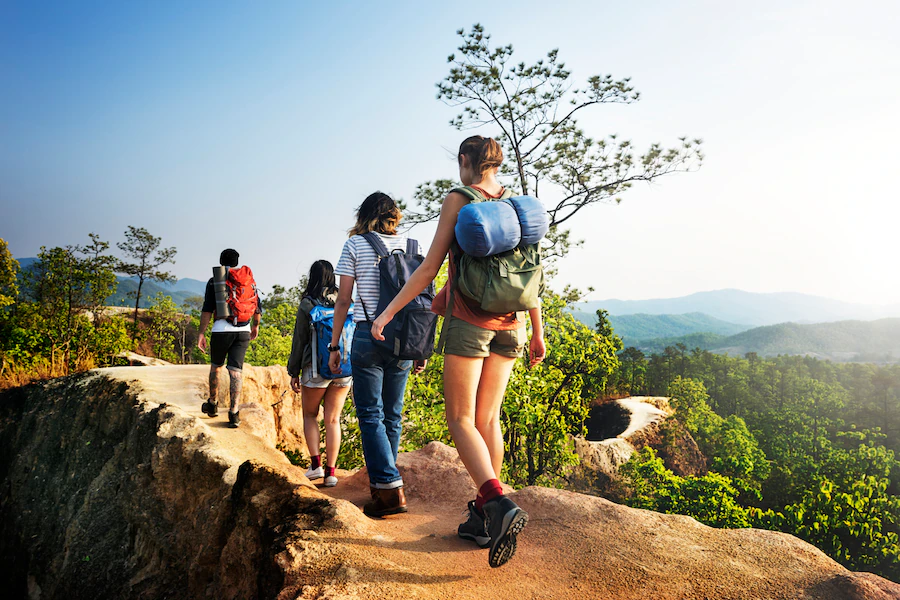
BEGINNER’S GUIDE TO HIKING: WHERE DO I START?
If you’re looking to start, but have no idea where to begin, then this is the article for you! We’ll go over all the basics of hiking, from what to wear, to how to prepare for your day hike, to what to do when you’re out on the trail. So whether you’re a complete beginner or just looking to brush up on your hiking knowledge, read on for the ultimate beginner’s guide to hiking!
Some of the things to consider when you go hiking are what to wear. You want to make sure you’re comfortable, but you also want to be prepared for any weather conditions. Layering is key – start with a base layer of something lightweight and breathable, like polyester or wool. Then add a middle layer for insulation, like fleece or merino wool, and finally a waterproof and windproof outer layer. Don’t forget to pack a hat and gloves too!
Next, you’ll need to think about what to bring with you on your hike. Water is essential, so make sure you have enough to last the whole day. snacks are also a good idea, as well as a first-aid kit in case of any emergencies. And if you’re hiking in an area with bears, you’ll need to bring bear spray too!
Now that you know what to wear and what to bring, it’s time to start planning your hike. First, you’ll need to choose a destination – there are plenty of great hiking trails all over the world. Once you’ve decided where you’re going, it’s time to map out your route and figure out how long it will take. And finally, make sure you tell someone where you’re going and when you expect to be back – just in case!
So there you have it – everything you need to know to get started with hiking! Just remember to take your time, plan, and be prepared for anything. And most importantly, have fun!
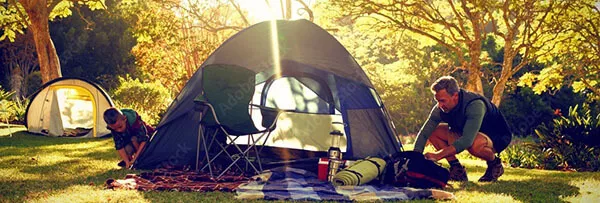
So which is better: Hiking or Trekking?
To be completely honest hiking is for wimps! Trekking involves traveling long distances, it is for people who want to get out there and explore the world. If you’re looking for a real adventure, trekking is the way to go.
What type of traveler is best suited for trekking?
Trekking involves long energetic walks and is a great way to see the world and get some exercise, but it’s not for everyone. There are different types of travelers, and some are better suited for it than others. Here’s a look at the different types of travelers and which ones are best suited for trekking.
The first type of traveler is the adventurer. This type of traveler is always looking for new experiences and is up for anything. They’re the ones who are always asking, “What’s next?” and are always game for a new adventure. This is perfect for adventurers because they’re always looking for new challenges.
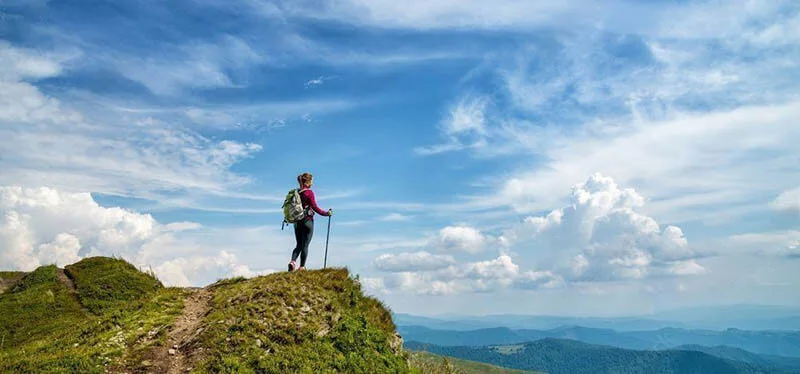
The second type of traveler is the explorer. Explorers are similar to adventurers, but they’re more interested in the journey than the destination. They’re curious and want to learn about new cultures and people. the activity is perfect for explorers because they can take their time and soak in everything around them.
The third type of traveler is the sightseer. Sightseers are more interested in seeing the sights than anything else. They want to go to all the famous landmarks and take lots of pictures. Trekking is perfect for sightseers because they can take in all the beauty of nature.
So, which type of traveler is best suited for trekking? All types of travelers can enjoy it, but adventurers, explorers, and sightseers will probably get the most out of it.
What are the must-do treks in the world?
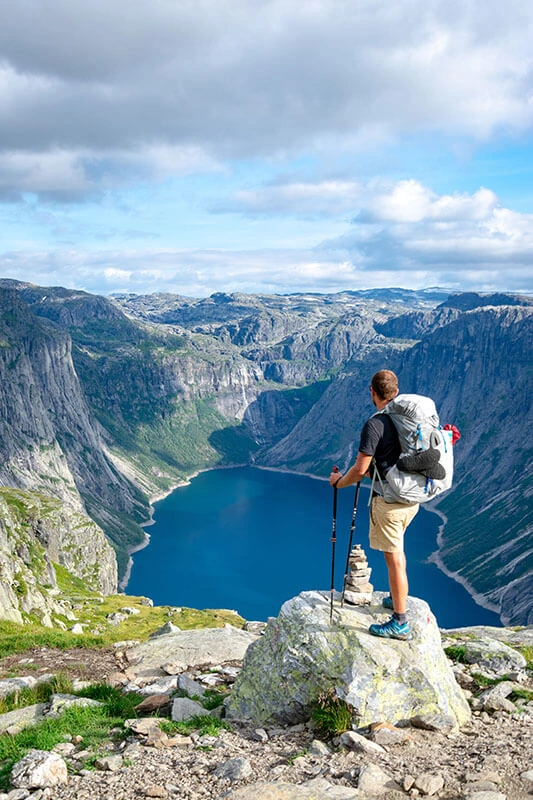
1. The Inca Trail, Peru
2. The Overland Track, Australia
3. The John Muir Trail, California
4. The Chilkoot Trail, Alaska
5. The West Highland Way, Scotland
6. The Snowman Trek, Bhutan
7. The Camino de Santiago, Spain
8. The Great Wall of China
9. The Appalachian Trail, USA
10. The Pacific Crest Trail, USA
Hiking vs trekking: distance
In this great debate. Some say that hiking is simply walking, while trekking implies a longer, more arduous journey. Others argue that the distinction between the two is entirely arbitrary. So which is it?
The answer, dear reader, is both. And neither. It all depends on your perspective.
If you’re the kind of person who likes to take things slow and enjoy the scenery, then a hike is probably more your speed. But if you’re the type who likes to push themselves to their limits, then a trek is probably more up your alley.
At the end of the day, it doesn’t matter what you call it. Whether you’re hiking or trekking, the important thing is that you’re getting out there and enjoying nature. So get out there and explore, and let us know what you think!
Hiking vs trekking: Terrain
When it comes to it, it all depends on the terrain. If you’re looking for a stroll through some scenic woods, then hiking is probably your best bet. But if you’re looking to challenge yourself and get your heart rate up, then trekking is the way to go.
Trekking is just hiking on steroids. It’s more strenuous and often takes place on rougher terrain. So if you’re looking for a real workout, trekking is the way to go. But be warned – it’s not for the faint of heart.
Some say that hiking is simply walking on a trail, while trekking involves a more strenuous journey, often involving camping and backpacking. Others say that the two terms are interchangeable. So, what is the difference between the two activities?
Trekking is often seen as a more challenging activity than hiking, as it usually involves carrying all of your gear with you on your back, and often takes place in more remote areas. They often have to be self-sufficient, as they may not have access to help if they get into difficulty.
Hiking, on the other hand, is generally seen as a less challenging activity. Hikers typically don’t carry all their gear with them, and the trails they follow are usually well-marked and well-maintained. Hiking can be a great way to enjoy the outdoors without having to rough it too much.
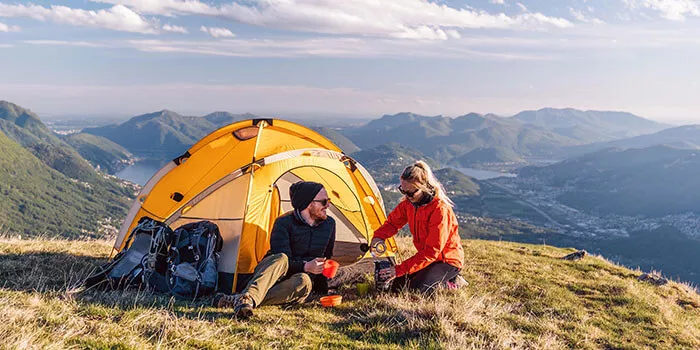
Hiking vs trekking: duration
Hiking can be done in a day. Whereas Trekking takes days or even weeks, it is a long journey undertaken on foot in unchartered areas. Hiking is a casual activity. Trekking is a serious undertaking.
Hiking vs Trekking: The Gear
Here is a quick rundown of what you need for each activity:
Clothing or equipment required for hiking:
-A pair of good hiking shoes. You need something that will be comfortable to walk in and that will provide good traction on the trail.
-A daypack to carry all of your essentials.
-A map and compass (or a GPS device) in case you get lost.
-Plenty of water and snacks to keep you fueled up.
-Sunscreen, a hat, and sunglasses to protect you from the sun.
-A first aid kit in case of any emergencies.
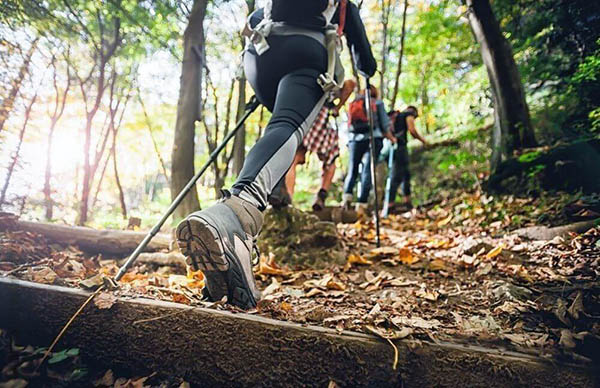
Clothing or equipment required for trekking:
-A sturdy pair of trekking boots or shoes. You’ll be doing a lot of walking (and sometimes even climbing) so you need something that can handle the tough terrain.
-A backpack that is big enough to fit all of your gear. This includes things like a tent, sleeping bag, extra clothes, and food.
-Again, a map and compass (or GPS) are a must in case you get off the beaten path.
-Plenty of water and snacks, as well as a stove and some basic food items if you’ll be walking for multiple days.
-Sunscreen, a hat, and sunglasses for protection from the sun.
-A first aid kit for your backpacking trip.
-Walking poles
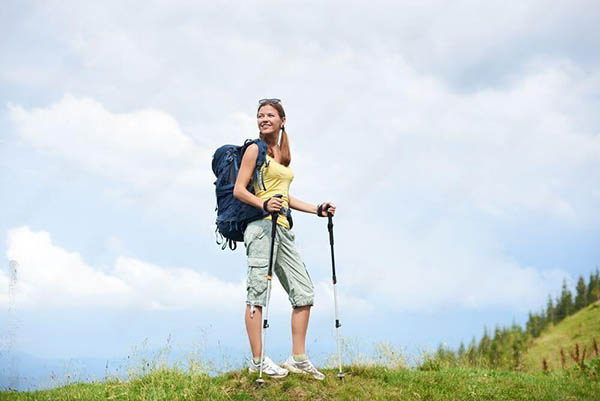
What Are The Differences Between Hiking, Trekking, Backpacking & Mountaineering?
Mountaineering is the most challenging of these activities and usually involves climbing mountains. This requires specialized equipment and training and is not for the faint of heart. As for the other two physical activities, check the article above.
Is hiking good for losing weight?
Hiking is a great way to lose weight. It’s a low-impact form of cardio that can help you burn calories and shed pounds. Plus, it’s a great way to get outdoors and enjoy the fresh air.
Natural environmental Impact
Hiking and trekking have long been touted as eco-friendly activities. After all, what could be more environmentally friendly than walking? But a new study has found that it can have a significant impact on the natural environment – and not always in a good way.
The study, published in the journal Nature Communications, looked at the environmental impact of hiking and trekking in the Alps. Researchers found that while both do have some benefits for the environment – such as reducing soil erosion – they also have some negative impacts.
For example, the study found that hikers and trekkers tend to trample vegetation, which can damage ecosystems. In addition, they often leave behind litter, which can pollute waterways and attract animals.
So, while hiking and trekking may be good for your health, they may not be so good for the environment. If you’re looking to reduce your impact on the environment, you might want to consider other activities – such as biking or kayaking.
ADVENTURE ACTIVITIES EQUIPMENT LIST
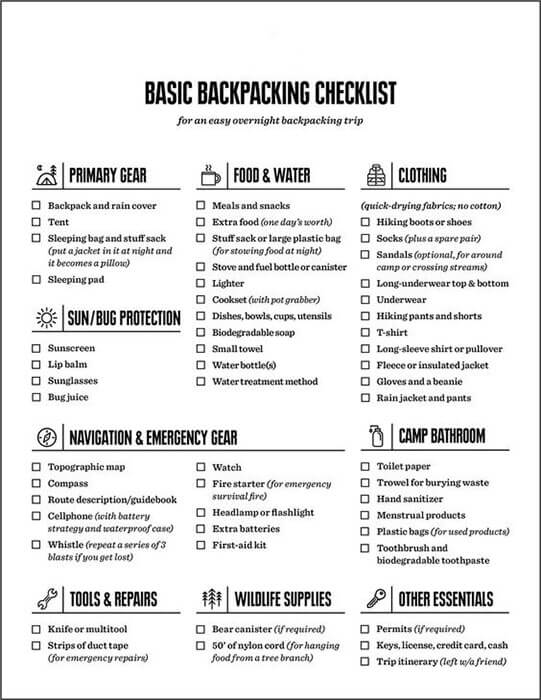
This List from Rei is designed to provide a means for longer hikes, be it a day or overnight experience.



